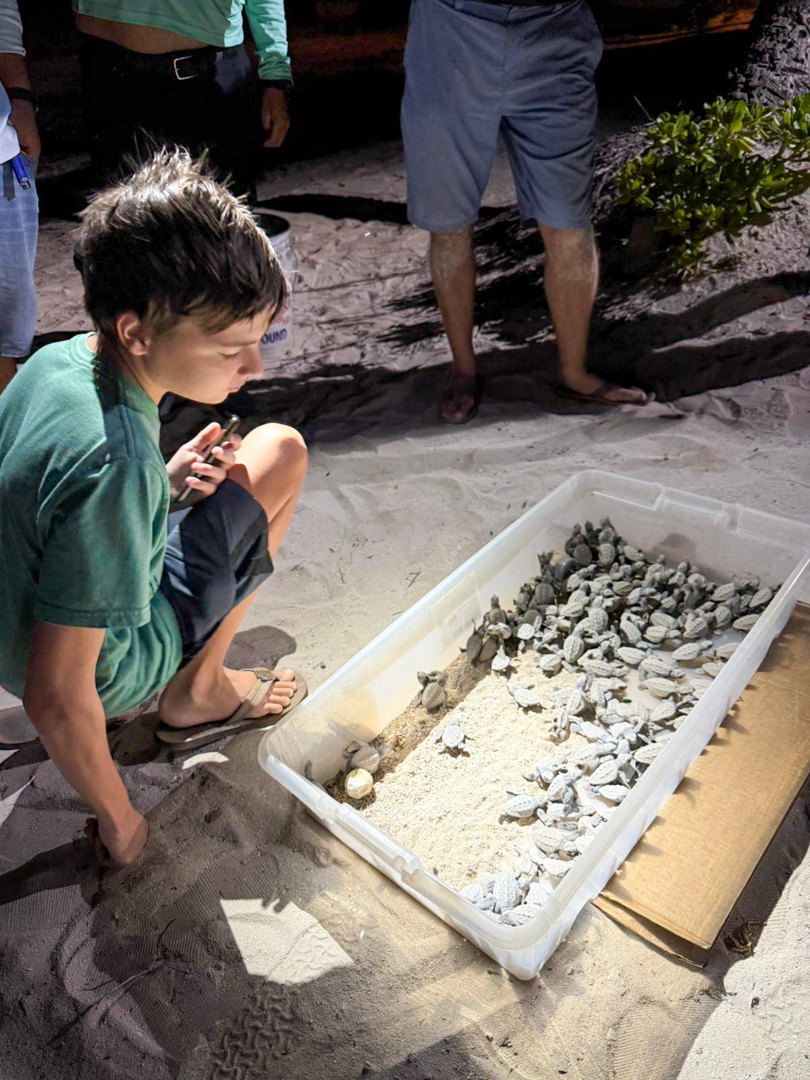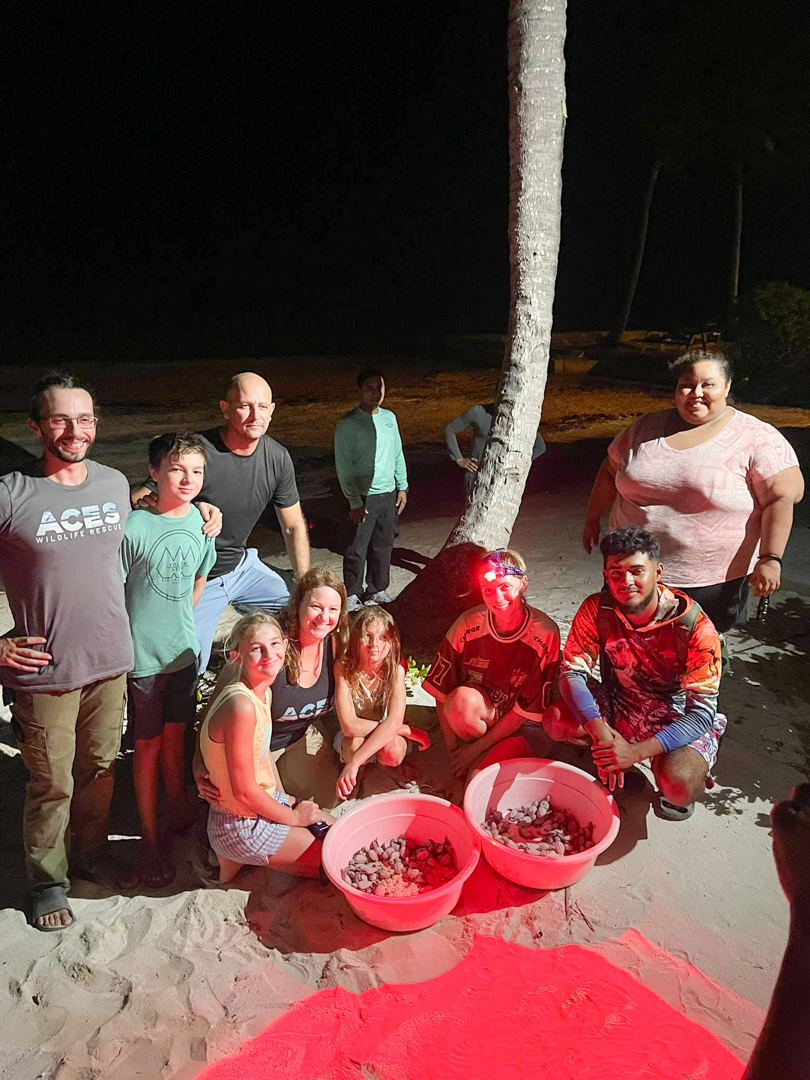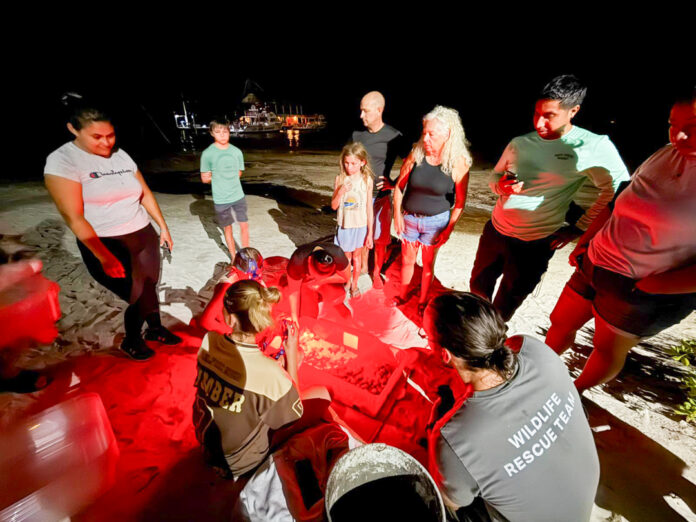On Wednesday night, July 23rd, residents just north of San Pedro Town reported the sighting of baby sea turtles on the beach. Approximately 139 hatchlings had emerged but appeared disoriented. The ACES Wildlife Rescue team was first contacted and, in turn, reached out to the Hol Chan Marine Reserve, which oversees a sea turtle conservation program. Under Hol Chan’s guidance, the hatchlings were rescued. They are now in the care of the Reserve and will be safely released into the sea in the coming days.
This is one of the few nests reported in recent years near San Pedro Town. ACES Wildlife Rescue’s Executive Director, Ciaran O’Mordha, said they received the call around 8:30PM from someone in the Mara Laguna area, just north of the Boca del Rio Bridge. The ACES team, which includes a clinic supervisor with turtle experience, Hanna O’Mahony, responded to the location and advised onlookers not to interfere with the turtles until the situation could be adequately assessed.
“When you see a situation like that, everyone wants to help,” O’Mordha said. “But do human interventions help? Is handling the animals necessary? At ACES, we work with crocodiles, bird species, and freshwater/terrestrial turtles in partnership with the Forest Department. Sea turtles, however, fall under the Fisheries Department, so we contacted the Hol Chan Marine Reserve—the approved experts for handling these situations.”
O’Mordha said that since ACES was the first group contacted, they went to the site to ensure no one acted until Hol Chan personnel arrived. Once Hol Chan’s marine biologist assessed the situation, they confirmed that human intervention was necessary. “We followed the advice of Hol Chan,” he said. “They instructed us on how to handle the turtles to avoid harm, as they are very fragile.”
“We urge people not to handle baby sea turtles on their own unless guided by someone with expertise,” O’Mordha emphasized.
Some concerns were raised about the turtles being handled without gloves. However, O’Mordha clarified, based on quick fact-checking, that gloves are not required if hands are clean, dry, and contact is gentle and brief. Research suggests gloves can do more harm if they are textured, synthetic, or contain residue. Clean, bare hands are often safer for short interactions.
O’Mahony added that sea turtles tend to return to the beach where they were born to lay their eggs. This may indicate that the area near downtown San Pedro could be an active, though previously unnoticed, nesting ground. Hol Chan’s sea turtle nesting program typically monitors more remote beaches, such as Rocky Point and Robles, located over ten miles north of town.
While Hol Chan’s marine biologist, Julio Noble, was unavailable for comment, representative Mariela Archer confirmed their involvement in the rescue. She identified the hatchlings as Loggerhead turtles. “When we have situations like these, the turtles are kept for a day or two for health monitoring and then released over the reef,” she said. Archer noted that ACES promptly contacted their marine biologist after the initial report was made.
Two significant threats to the hatchlings were identified. The first was exposure to artificial lighting near the nest, which may have disoriented the turtles. Hatchlings instinctively follow the moonlight reflected on the ocean, and artificial light can cause them to head inland instead. The second issue was the presence of thick Sargassum on the beach, extending 30 feet out into the water. Experts said it would have made it nearly impossible for the turtles to reach the sea unassisted.
Hol Chan emphasized that sea turtles are ecologically vital and hold significant value for Belize’s tourism industry. They remind the public not to disturb suspected turtle nests and instead report all sightings of nests or turtle tracks (crawls) to the Hol Chan Marine Reserve at 614-6539.
For more information and updates on their conservation efforts, visit: https://www.holchanmarinereserve.org.

Share
Read more

